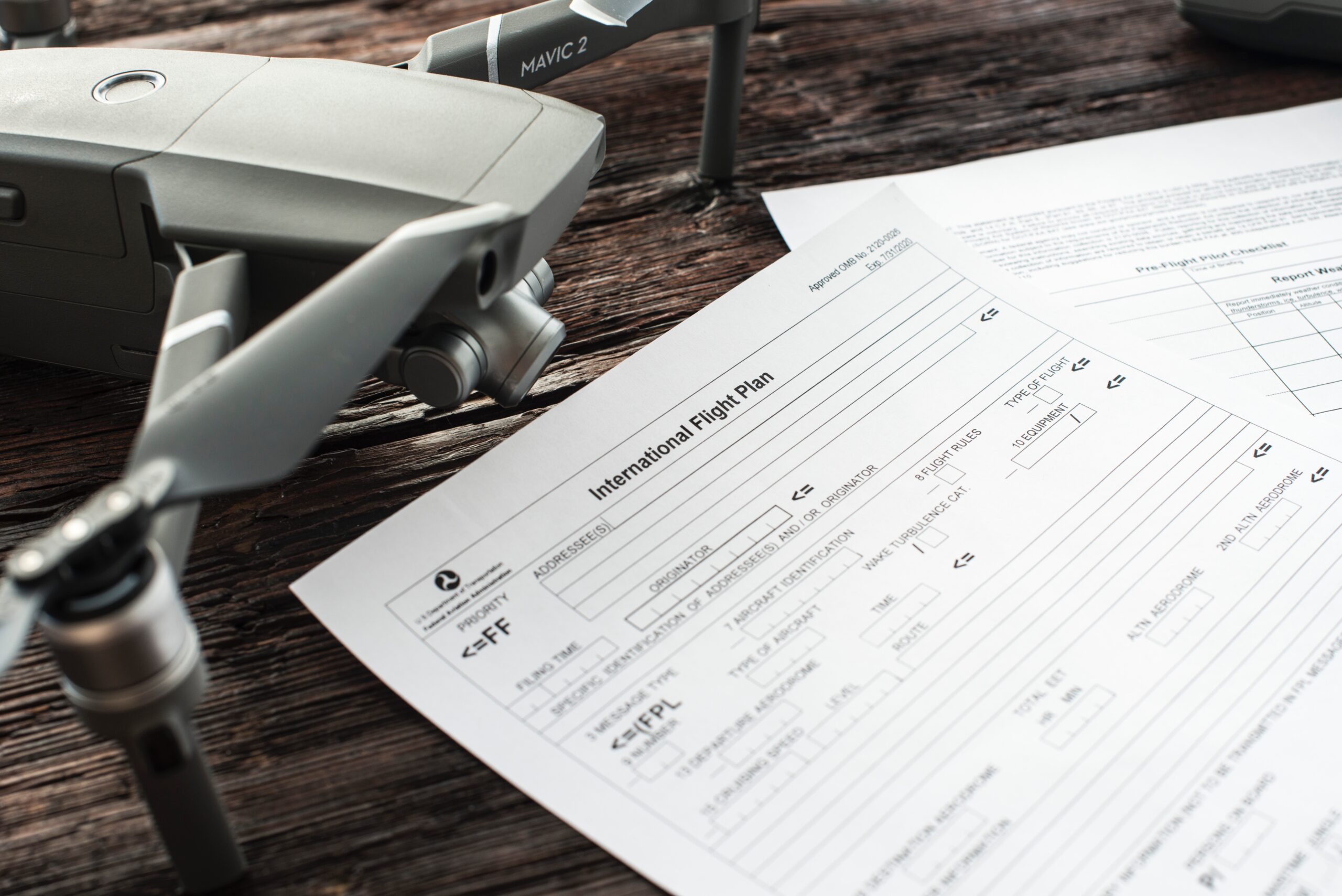Maintaining compliance has become a top priority across industries as businesses navigate an increasingly complex web of regulations and standards. Automated regulatory compliance, powered by artificial intelligence (AI), offers a promising solution. By leveraging AI technology, companies can ensure adherence to industry regulations and standards more efficiently and accurately than traditional methods.
AI-driven tools and algorithms can analyze and compare existing regulations, internal policies, and standards, streamlining gap assessments and compliance analyses. Furthermore, AI can significantly enhance horizon scanning, allowing organizations to evaluate better pending legislation, proposed rules, enforcement actions, and public comments made by regulators. This enables businesses to address potential risks and concerns that may lie ahead proactively.
By integrating AI into their compliance strategies, organizations can not only reduce the time and resources required to manage regulatory obligations but also improve overall business performance. As AI continues to evolve, companies must recognize the importance of harnessing this technology for regulatory compliance and embrace the innovation it brings to the field of healthcare professionals and the pharmaceutical business itself.
- Understanding Regulatory Compliance in the AI Era
- Challenges and Risks of AI-Driven Compliance
- AI Implementation for Regulatory Compliance
- Case Studies: AI in Regulatory Contexts
- Future Perspectives on AI and Regulatory Compliance
Understanding Regulatory Compliance in the AI Era
As artificial intelligence (AI) continues to permeate various industries, its impact on regulatory compliance and drug trials has become a crucial area of focus. Adopting AI systems for drug development helps automate and streamline compliance processes, thereby reducing human error and enhancing the efficiency of regulatory authorities. This section will explore the intersection of AI and law and the evolving global regulatory landscape.
The Intersection of AI and Law
AI-powered technologies, such as Generative AI, have the potential to transform the way pharmaceutical regulations are understood, their impact on drug substances is assessed, and how the necessary changes are implemented. By recognizing patterns and clustering similar issues, these systems aid in identifying relevant external rules and potential risks. Consequently, AI can provide significant assistance in managing regulatory compliance and industry standards for pharmaceutical companies.
In addition to privacy concerns, security concerns, transparency in drug regulation, and accountability, the development and use of artificial intelligence raises legal and ethical issues as well. The best way to protect the interests of clients and stakeholders is for organizations to strike a balance between leveraging AI capabilities and adhering to regulatory requirements.
Evolving Global Regulatory Landscape
With the rapid advancements in AI technologies, the need for a comprehensive regulatory environment has become paramount. Governments around the world are responding to this need by creating and enforcing laws and guidelines specifically tailored to the AI domain.
For instance, the EU AI Act is a recent regulation aiming to provide a legal framework for AI and pharmaceutical regulation in Europe. Its objectives include ensuring transparency in pharmaceutical development and regulation, accountability, and respect for fundamental rights while promoting a competitive AI market.
AI regulations are still developing in the United States, and there are some anticipated changes from 2023. Companies should keep a close eye on these developments and prepare for these shifts in regulations.
Efforts to establish a global standard for AI are ongoing, with international organizations working on creating unified guidelines for pharmaceutical regulations. For example, the OECD (The Organisation for Economic Co-operation and Development) has published its AI Principles, which serve as a foundation for AI regulation in many countries outside the EU.
Some key points to consider in the AI era of regulatory compliance are:
The convergence of AI and law, including the implications of generative AI in regulatory processes.
The increasing importance of regulatory compliance to protect data privacy, security, and transparency.
The evolution of the global regulatory landscape, encompassing regulations such as the EU AI Act and upcoming changes in the US regulatory environment.
By understanding these dimensions, organizations can navigate the complex world of AI-related regulations and ensure legal compliance while harnessing the power of AI to transform their business operations.
Challenges and Risks of AI-Driven Compliance

Dealing with Data Privacy and Security
AI-driven regulatory compliance solutions depend on vast amounts of data to function effectively. However, this reliance raises concerns about data privacy and security. Organizations must ensure that the AI models being employed to facilitate automated compliance respect privacy requirements and adhere to legal frameworks at both national and international levels.
Implementing security measures to protect sensitive data from potential breaches and unauthorized access is crucial. Examples of such measures include, but are not limited to:
Data encryption
Anonymization of personally identifiable information (PII)
Regular security audits
Moreover, organizations should consider the public health impact of data storage and management practices while addressing the risks associated with data privacy and security in AI-driven compliance systems.
Ethical Considerations and AI Bias
AI systems can inadvertently introduce undesirable biases, leading to unfair treatment and discriminatory outcomes in the compliance process. AI-driven compliance models rely heavily on historical data to identify patterns and make predictions. Thus, any pre-existing biases in the data could be perpetuated and even amplified by the AI system.
To mitigate the risks related to AI bias, organizations should:
Collect diverse, representative, and unbiased data
Adopt transparent and explainable AI algorithms that allow for easy detection and correction of biases
Perform regular evaluations to monitor the fairness and equity of AI-driven compliance solutions
Another critical ethical aspect to consider is accountability. Establishing clear lines of responsibility in the event of erroneous decisions or outcomes is vital. Organizations need to address this issue by defining the roles and responsibilities of different stakeholders, including AI developers, compliance officers, and decision-makers, in the regulatory compliance process.
In conclusion, while AI-driven compliance and senior management offer numerous benefits, organizations must be aware of the challenges and risks associated with data privacy, security, AI ethics, and biases. A proactive approach to managing these risks will ensure the safe and responsible deployment of AI for automated risk assessment, quality control, and regulatory compliance.
AI Implementation for Regulatory Compliance
The adoption of AI for automated regulatory compliance enables businesses to comply with industry regulations and standards more effectively. In this section, we will discuss integration strategies, best practices, and the use of AI in monitoring and reporting to ensure compliance.
Integration Strategies and Best Practices
There are several strategies and best practices for deploying AI in regulatory compliance:
Leverage existing systems: Integrate AI solutions with existing compliance and risk management systems to enhance their capabilities.
Choose appropriate AI models: Select the right AI models to address specific regulatory requirements, such as predictive analytics for forecasting risks and natural language processing (NLP) to analyze unstructured documentation.
Ensure data quality: High-quality data is the foundation of AI-based compliance systems. Invest in data cleansing and enrichment efforts to ensure the accuracy and reliability of inputs.
Establish clear guidelines: Establish guidelines for the use of AI systems in compliance, including how they interact with human decision-makers and processes.
Train users: Train employees in understanding and using AI-powered compliance tools to ensure their effective adoption and minimize resistance to change.
Monitoring and Reporting with AI
AI plays a crucial role in the real-time monitoring and reporting of compliance processes. Here’s how AI can augment these areas:
Real-time monitoring: AI-powered solutions enable continuous monitoring of transactions and operations, allowing businesses to identify potential compliance issues promptly. This supports faster decision-making and reduces potential exposure to regulatory penalties.
Predictive analytics: Using AI-based algorithms, organizations can forecast future risks associated with non-compliance. By proactively identifying potential threats, businesses can take preventive action and mitigate risks before they become critical issues.
Documentation analysis: NLP and machine learning techniques help analyze vast amounts of unstructured data, such as contracts, policy documents, and regulatory filings. This allows for a thorough review and assessment of compliance with regulations, ensuring that documentation adheres to industry standards.
Automated reporting: AI can automate the generation of regulatory reports, saving time and resources, reducing the possibility of human error, and streamlining communication with regulatory agencies.
By leveraging AI in regulatory compliance, organizations can optimize their processes and ensure adherence to industry regulations and standards more efficiently. This helps companies avoid severe penalties, maintain a strong reputation, and stay competitive in an ever-evolving regulatory environment.
Case Studies: AI in Regulatory Contexts

Finance and Banking Sector AI Adoption
AI has rapidly transformed how institutions comply with industry regulations and standards in the finance and banking sectors. Many banks and financial institutions have turned to AI to identify fraudulent activities, ensure data privacy, and handle anti-money laundering (AML) tasks more efficiently.
For instance, AI-powered systems can analyze vast amounts of transaction data in real-time, helping detect suspicious patterns and potential AML cases. This reduces manual workload and streamlines the compliance process, ultimately enabling institutions to focus on their core businesses without compromising regulatory compliance. Key AI features used in the finance and banking sector include:
Automated data analysis: AI algorithms quickly identify unusual or suspicious transactions, reducing false positives and increasing accuracy.
Natural language processing (NLP): AI systems can understand and interpret complex regulatory documents, making it easier for institutions to stay up-to-date with any changes in regulations.
Healthcare and Manufacturing Industry Adaptations
AI has also found its place in the healthcare, food industry, and manufacturing industries, where it is used to ensure compliance with industry-specific regulations, such as environmental standards, pharmaceutical manufacturers’ product names, patient privacy, and workplace safety.
In healthcare, AI-powered systems monitor patient data for privacy violations and assist medical devices in securely managing electronic health records (EHRs). Healthcare providers can then meet the stringent requirements of regulations like the Health Insurance Portability and Accountability Act (HIPAA). Some AI applications in healthcare include:
Intelligent data analysis: AI can analyze patient data for potential risks and privacy violations, flagging any issues for further investigation.
Automated reporting: AI systems generate reports demonstrating regulatory compliance, simplifying the auditing process.
Manufacturing companies can use AI to meet environmental regulations by analyzing production processes and raw materials and identifying opportunities for optimizing resource consumption and minimizing waste. AI applications in this sector include:
Predictive analysis: AI can predict equipment failures and maintenance requirements, allowing companies to address issues before they cause violations.
Supply chain optimization: AI can identify inefficiencies in a company’s supply chain, helping to minimize their environmental impact while maintaining regulatory standards.
Both the finance and banking sector and the healthcare pharmaceuticals, medical research, pharmaceutical equipment and manufacturing industries show promising examples of AI leveraging compliance management. As AI technology continues to advance, it is expected to play an even greater role in transforming regulatory compliance across various industries.
Future Perspectives on AI and Regulatory Compliance
Emerging Trends and Innovations
The regulatory compliance landscape continuously adapts as technology evolves to accommodate new advances. One of the most promising innovations is using artificial intelligence (AI) for automated regulatory compliance. This technology can potentially and significantly reduce the burden on organizations and ensure adherence to strict industry regulations and product quality standards.
Some key trends observed in AI and regulatory compliance include:
Integrating AI into audit software: AI can enhance risk management and compliance by automating audits and identifying potential risks. This can lead to more accurate and timely decisions, helping organizations stay compliant with various regulations.
Adoption of generative AI: Generative AI models can help organizations understand, assess, and implement changes required to comply with evolving regulatory requirements, as seen in Deloitte’s research on generative AI for regulatory compliance.
Focus on AI transparency: Regulators are increasingly emphasizing the importance of AI transparency, pushing organizations to understand how their AI systems reach specific decisions and outcomes.
The Role of AI Ethics Officers and Governance
The implementation of AI in pharmaceutical product regulatory compliance also brings new challenges, such as ensuring ethical AI usage and proper governance. Recognizing this growing concern, more organizations are appointing AI Ethics Officers responsible for overseeing the ethical development and implementation of AI systems in the pharmaceutical industry and Food and Drug Administration (FDA). Their roles include:
Assessing potential risks and biases in AI systems
Ensuring compliance with relevant regulations
Developing guidelines for responsible AI usage
Educating employees on AI ethics and best practices
In addition to the appointment of AI Ethics Officers, organizations are also focusing on AI governance. Proper governance frameworks help ensure AI systems comply with regulations and align with organizational values. These frameworks typically consist of:
Compliance mechanisms: Processes for monitoring adherence to legal, ethical, and safety standards, which encompass both internal and external regulations.
Technology oversight: Ensuring AI systems are appropriately audited, transparent, and accountable, as recommended by NIST AI standards, to minimize potential misuse of AI technology.
Ethical training: Providing employees with knowledge and resources to use AI responsibly and following AI system development, deployment, and operation guidelines.
In conclusion, the future of AI regulatory compliance involves continuous improvement, new trends, and innovations coupled with effective governance and ethical considerations. Organizations and regulatory bodies can ensure more efficient, transparent, and ethical AI-driven regulatory compliance by staying updated on these developments and adopting necessary changes.
Platforce is the best CRM software for lead generation, order management, sales automation, and task management. Unlike other software, Platforce gives your company all it needs to optimize customer relations and boost customer experience. Try out the Platforce CRM system with a demo or tour now. You can also stay updated on our YouTube and LinkedIn channels.
